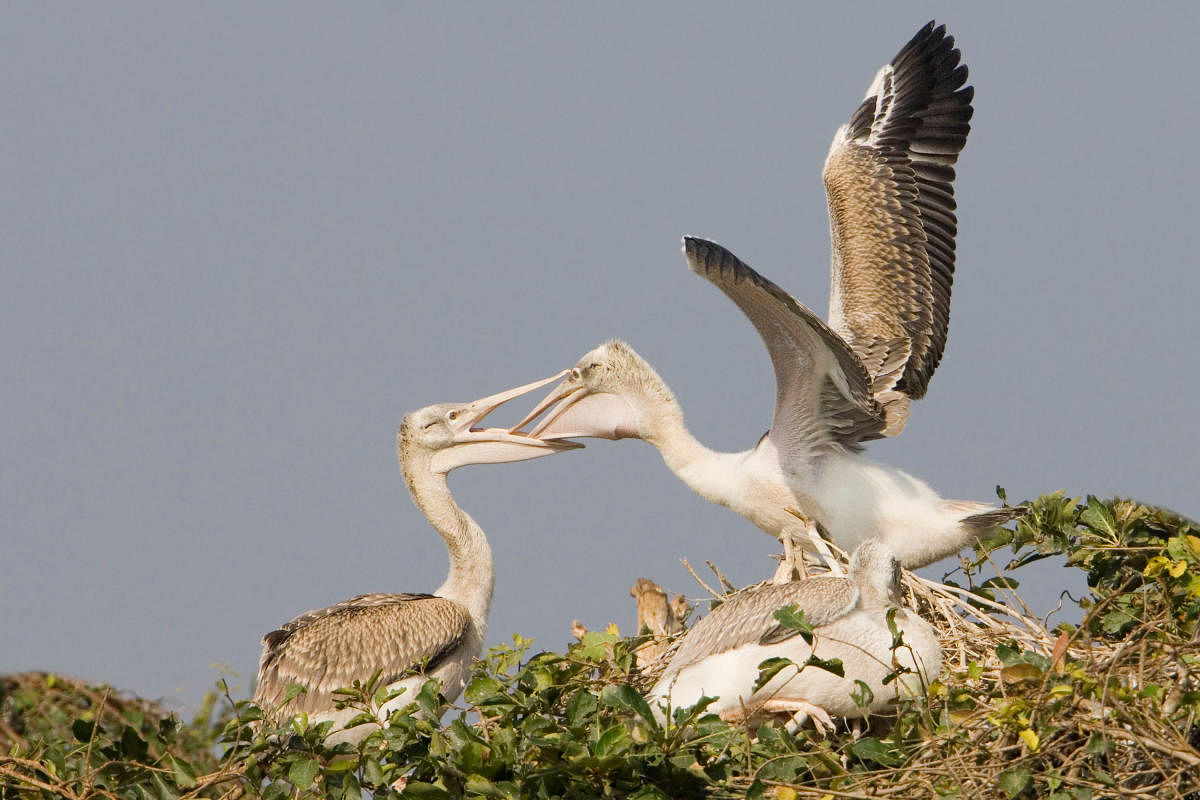

Instead of racking her brain in a swanky corporate boardroom which was there for the asking, she loves to traverse the rugged terrain of the mesmerising wild to shoot majestic birds and beasts — not with a gun but with an assortment of high-resolution cameras. By becoming India’s first woman wildlife photographer, Rathika Ramasamy has not only aced her craft with dexterity but also made an entry into what is widely perceived as a male bastion. In the process, she has dished out exquisite photographs of wildlife combining technical finesse with captivating stories.
“Every time I press the shutter, it is one step closer to Mother Nature,” says Rathika, who was born and schooled in Theni, Tamil Nadu. Armed with an engineering degree in computers which she topped with a degree in Business Administration, she had a promising career in the software industry, but deep in her heart, she was a shutterbug with a fascination for the wild, especially birds. “I started dabbling in photography around 2003. During my first visit to the Bharatpur Bird Sanctuary, I thought of capturing images of birds so that I could enjoy seeing those again. Delhi, where I spent long years, is surrounded by bird sanctuaries and national parks and is the main route for migratory birds. I used those opportunities to specialise in bird photography,” reminisces the acclaimed photographer, who was a judge for this year’s prestigious BigPicture: Natural World Photography Competition, USA.
Cited as the best-known woman photographer globally on the internet in 2018, she has a string of memorable experiences to recall. “In Jim Corbett National Park, I spotted a tiger with its kill in a water body. Then, there was a tiger which suddenly appeared and continued walking in front of my jeep for almost half an hour. It was a rare experience, and I clicked several photographs of the gorgeous beast.”
Among her favourite pictures are ‘Art of Preening,’ ‘Dancing Crane,’ and ‘Sleeping Lion Cubs’. “I can’t forget shooting a pair of Spotted Owlets at Sultanpur National Park in Haryana. I had never seen them preening and snuggling; it was very special to photograph their interaction. Another favourite is a photograph of lion cubs sleeping on a tree that I shot at Serengeti National Park in Tanzania, the world’s largest wildlife reserve and a UNESCO World Heritage Site. The cubs looked so adorable,” says Rathika, who published her first photo book Bird Photography in 2010.
Rathika uses an array of cameras and lenses for her craft, but Nikon D2x and Nikon D3 are her favourite ones. The main lenses she uses for bird photography are Nikkor AF-S VR 600mm f/4G ED, Nikkor 300mm f/4D ED-IF and Nikkor AF-S VR 70-200mm f/2.8G IF-ED. She uses low-weight Gitzo GT-5540LS for tripod and Wimberley Head II for large telephoto lenses.
The list of her role models includes Arthur Morris for bird photography, Moose Peterson for wildlife photography, and Steve McCurry for his documentary photographs. “His (Morris) photographs are not just documentation of birds. He also captures fine action shots of birds with a great aesthetic composition. Peterson is among the earliest wildlife photographers to use the digital camera.” Between birds and animals, she is fond of feathered creatures. Kingfisher in birds and tigers and elephants are more photogenic in animals while Keoladeo National Park, Bharatpur is her favourite place for bird photography. The cardinal rule for a wildlife photographer, she says, is to ‘know your subjects’ while research and planning are important before going for any shoot. “Wildlife photography is just not shooting animals/birds; it reflects the photographer’s style and artistic expression. I have learnt to be patient, and have been rewarded with most memorable images,” she says.
Rathika, however, makes it clear that wildlife photography is glamorous only from a distance as it is an exacting art. She carries a 10-kg load of camera and accessories like a laptop, extra batteries and memory cards, and basic medicines. She is careful not to use deodorants, perfume or oil as such products would give her presence away to animals. An influencer with more than 1.2 million followers on social media, she feels elated about being India’s first woman wildlife photographer. “Initially, I didn’t think about wildlife photography being male-dominated. Only later I realised that I was the first woman to venture into this field. I feel happy when young girls tell me that I inspire them.”
From engineering to management to wildlife photography, how do you find your journey? “It has really been a wonderful journey. I am still travelling and also enjoying it,” quips Rathika, whose eventful career is strewn with accomplishments. Uccelli in Natura, an Italian magazine on birds, featured her as Asia’s best bird photographer. Her crane dance photograph was the cover image of Helm Dictionary of Scientific Bird Names in 2009. She has also featured in Sanctuary Asia; National Geographic Traveller India; BBC wildlife magazine; WWF wall calendar, and Festival of Owls in Italy (2014).